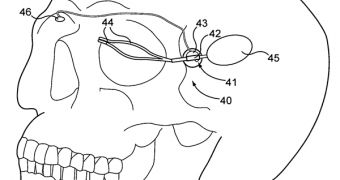With the passing of the years, more and more advanced prosthetic devices have hit the market, each carrying its own innovation, and each representing a different answer to the issue of getting people to walk or to move their arms again. Because most of the research in the field has been done for external devices, internal ones, such as those used in reconstructive surgery, still look awkward when in function. That's why new research is now aimed at developing robotic prosthetics that go underneath the skin of the face, in order to give paraplegics at least a chance of being able to express their emotions, however artificial.
Naturally, the basic principles of these new classes of prosthetic devices will be the same as those designed for their larger cousins. Electrical impulses that normally travel from the brain to the muscles of the face will be intercepted by electrodes, which will then convert them into movements of facial muscles, driven either by small motors, or by reduced electrical shocks. The main idea is not to make individuals who wear them appear unrealistic, and to render the motions as smooth as possible.
“The face is an area where natural-appearing active prosthetics would be particularly welcome,” surgeons Craig Senders and Travis Tollefson, from the University of California in Davis (UCD), who have recently filed for a patent on a technique to stimulate facial expression by using artificial polymer muscles especially fit for people suffering from advanced paralysis, write.
One of the most useful applications for the new idea, the team mentions, is the possibility for paralyzed persons to regain control of their eyelids, which, if left unclosed for a long period of time each day, can eventually lead to ulcerations in the eyes and even blindness. They maintain that even if the system works for this use only, it will have been worth it.
The image on the left exemplifies such a device, where an artificial polymer muscle (41) is seen pulling both eyelids shut. This is very important and relatively easy to perform, the two experts opine. What's more difficult is to create larger muscles, which will have to act on larger portions of the body as well, like the jaw, when chewing food, for instance. Such a muscle would have to be very strong, but also small, so that the person wearing it could keep his or her regular look.

 14 DAY TRIAL //
14 DAY TRIAL //